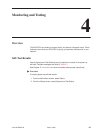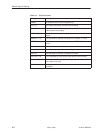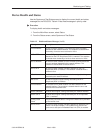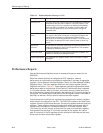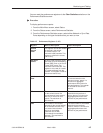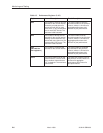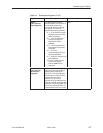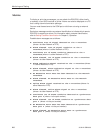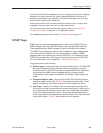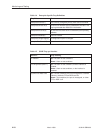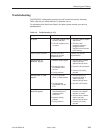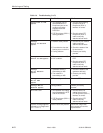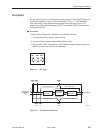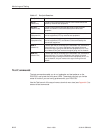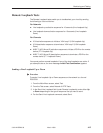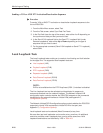
Monitoring and Testing
4-9
3162-A2-GB20-30
March 1999
If two alarm conditions are detected at once, the higher priority alarm is reported.
However, if an even higher priority alarm is detected before the first alarm is
cleared, the later alarm is not reported. (The alarms listed above are in priority
order with the highest priority listed first.)
Alarms remain active until the alarm condition is cleared. Also, an alarm clear
message is only sent when there are no other alarms active.
For information about alarm configuration options, refer to
Alarm and Trap
Configuration Options
in Appendix C,
Configuration Options
.
For troubleshooting information, refer to
Troubleshooting
on page 4-11.
SNMP Traps
SNMP traps are unsolicited messages that are sent from the DSU/CSU to an
SNMP manager when the DSU/CSU detects certain pre-specified conditions.
These traps enable the SNMP manager to monitor the state of the network.
The SNMP Trap configuration option must be enabled for trap messages to be
sent over the communications link. You must specify the number of SNMP
managers that are to receive traps from this DSU/CSU, an IP address for each
SNMP manager specified, and the type of traps to be sent from this DSU/CSU.
For more information, refer to Appendix C,
Configuration Options
.
Trap types consist of the following:
H General traps – Include warmStart and authenticationFailure. The DSU/CSU
sends a warmStart trap after it has been reset to indicate that it has just
reinitialized itself. The DSU/CSU sends an authenticationFailure trap when it
has received an SNMP protocol message that has not been properly
authenticated. These traps are enabled by the General Traps configuration
option.
H Enterprise Specific traps – Signify that the DSU/CSU has recognized an
enterprise-specific event. See Table 4-4 for enterprise-specific traps. These
traps are enabled by the Enterprise Specific Traps configuration option.
H Link Traps – Identify the condition of the communications interface, either
linkDown (one of the communications interfaces has failed) or linkUp (one of
the communications interfaces has just come up). These traps are enabled
by the Link Traps configuration option. The communications interfaces for
which these traps can be generated are specified by the Link Trap Interfaces
configuration option. Table 4-5 defines traps for each interface.



